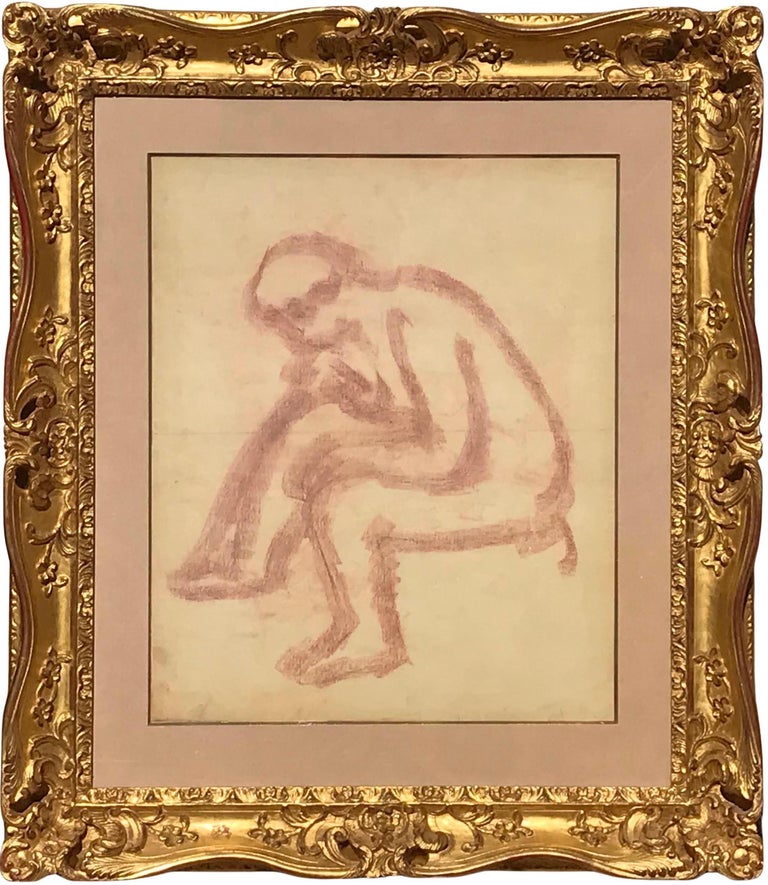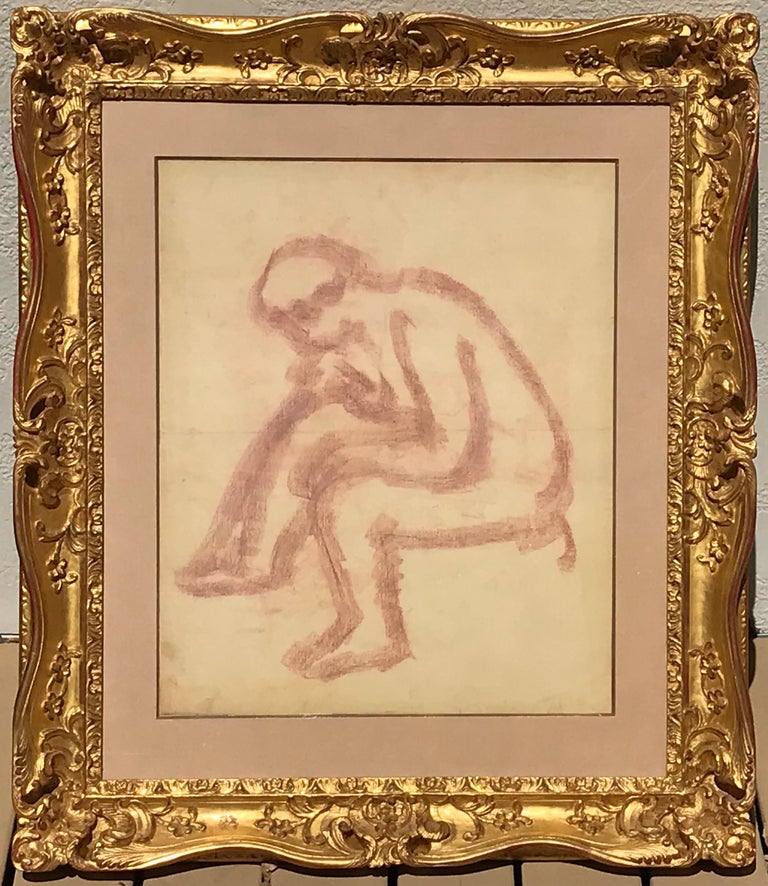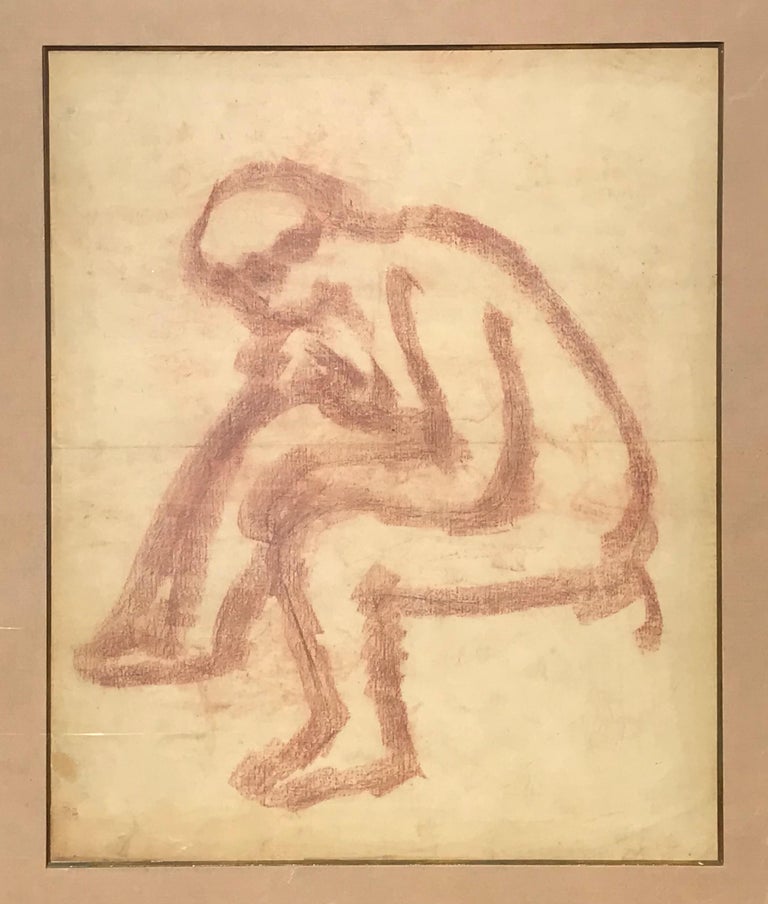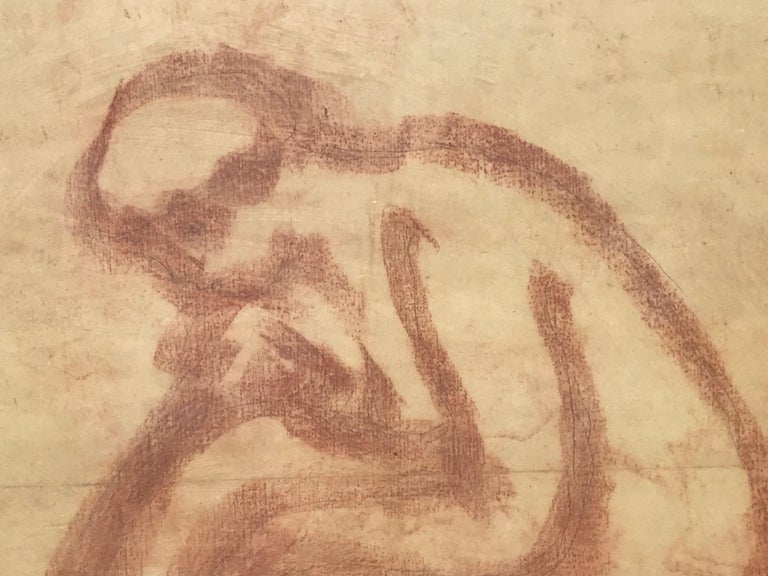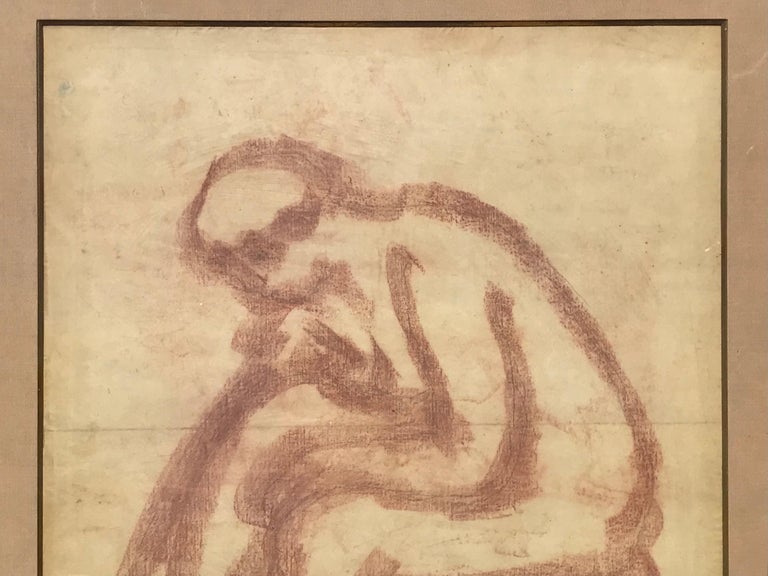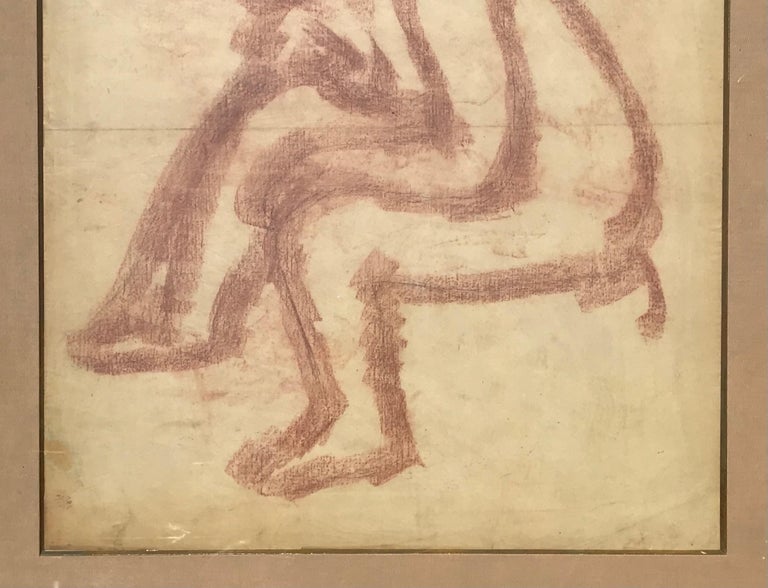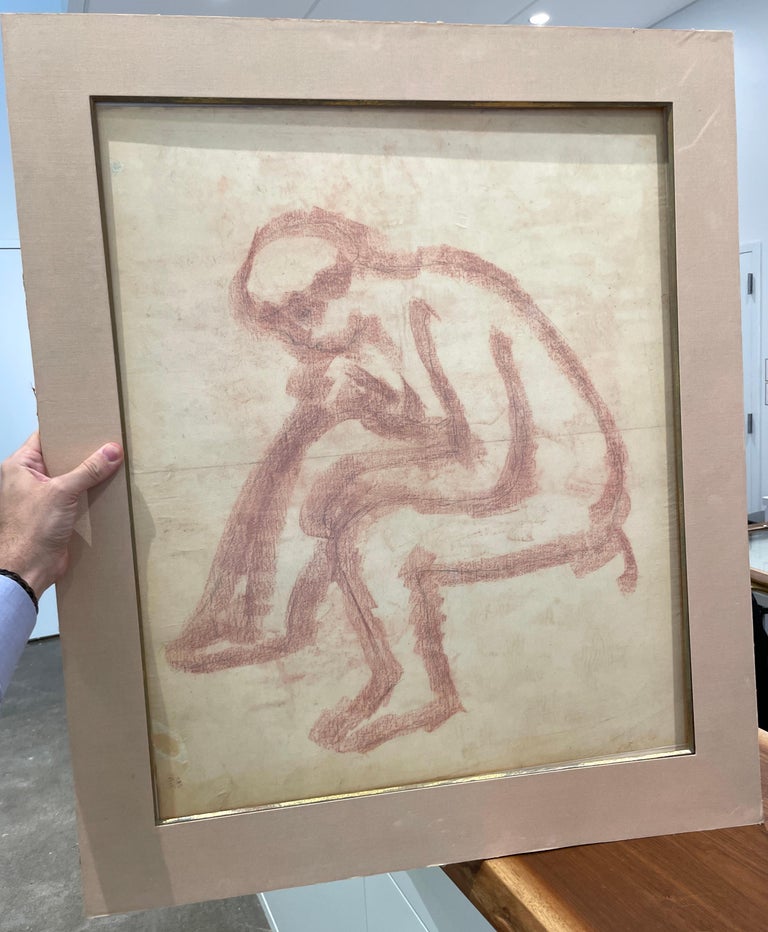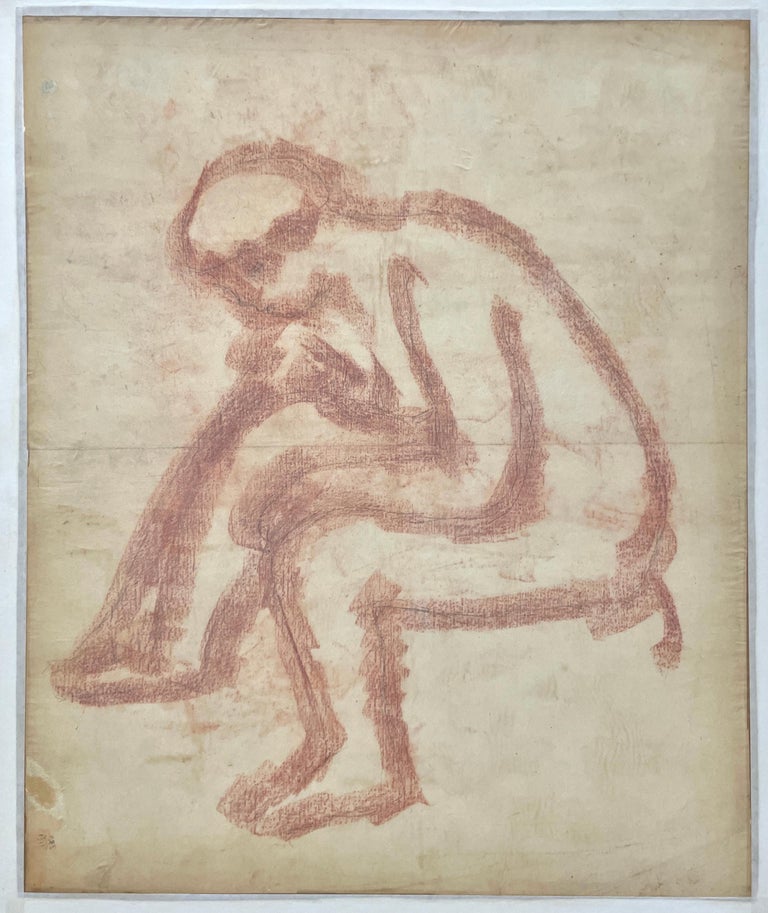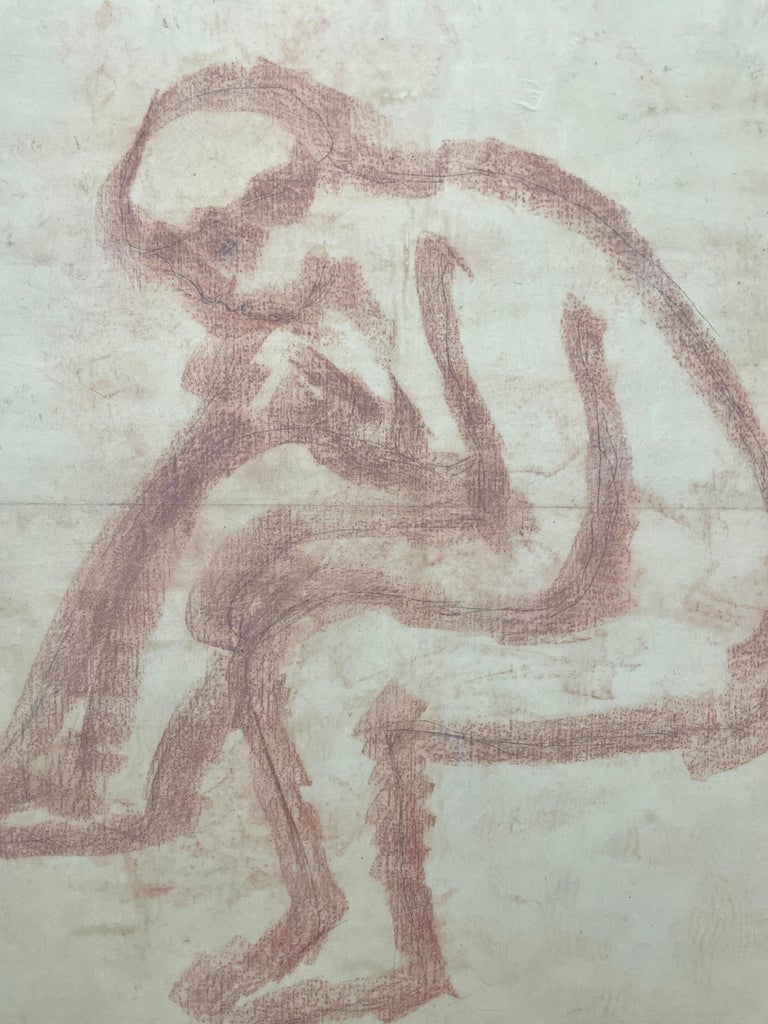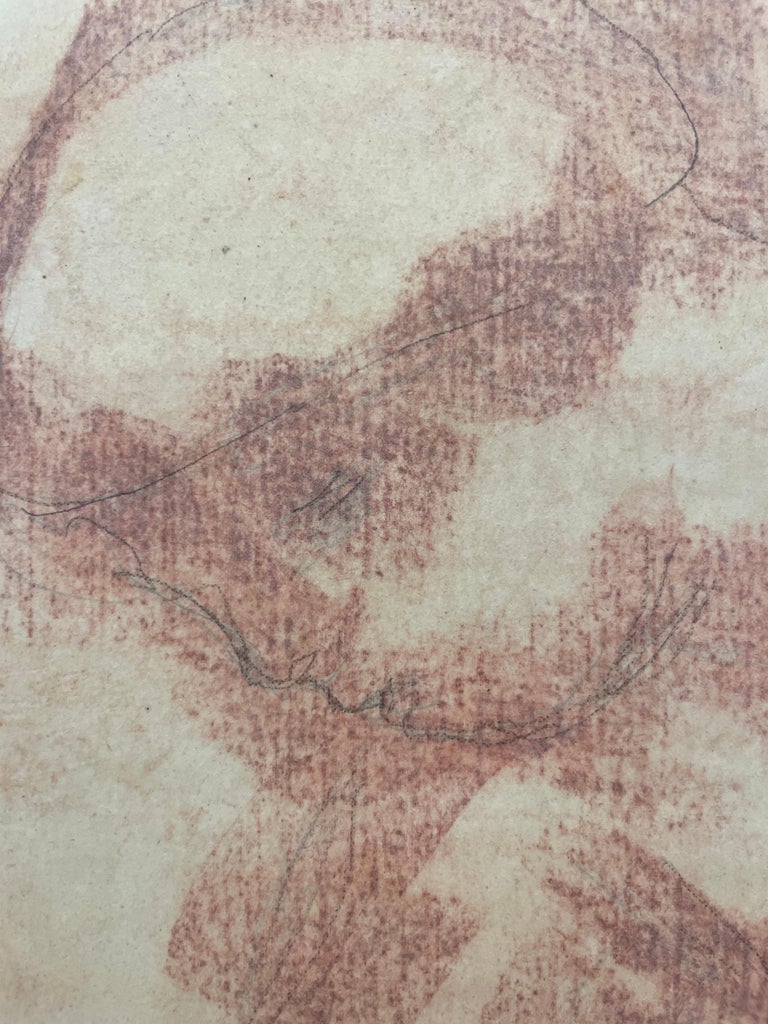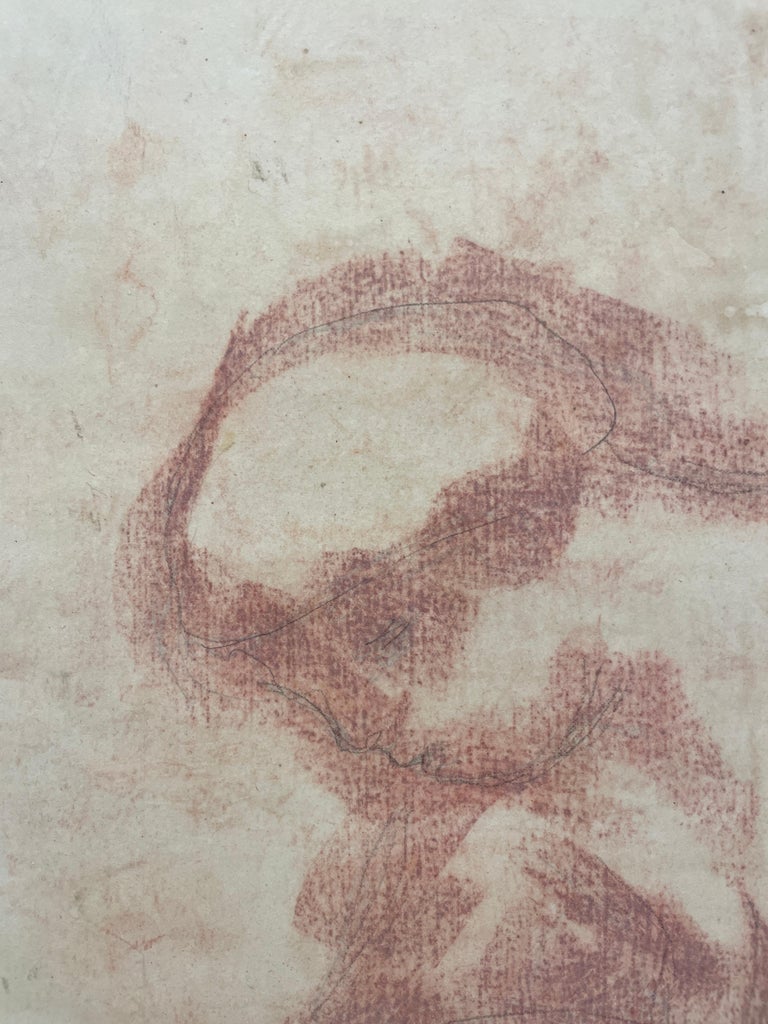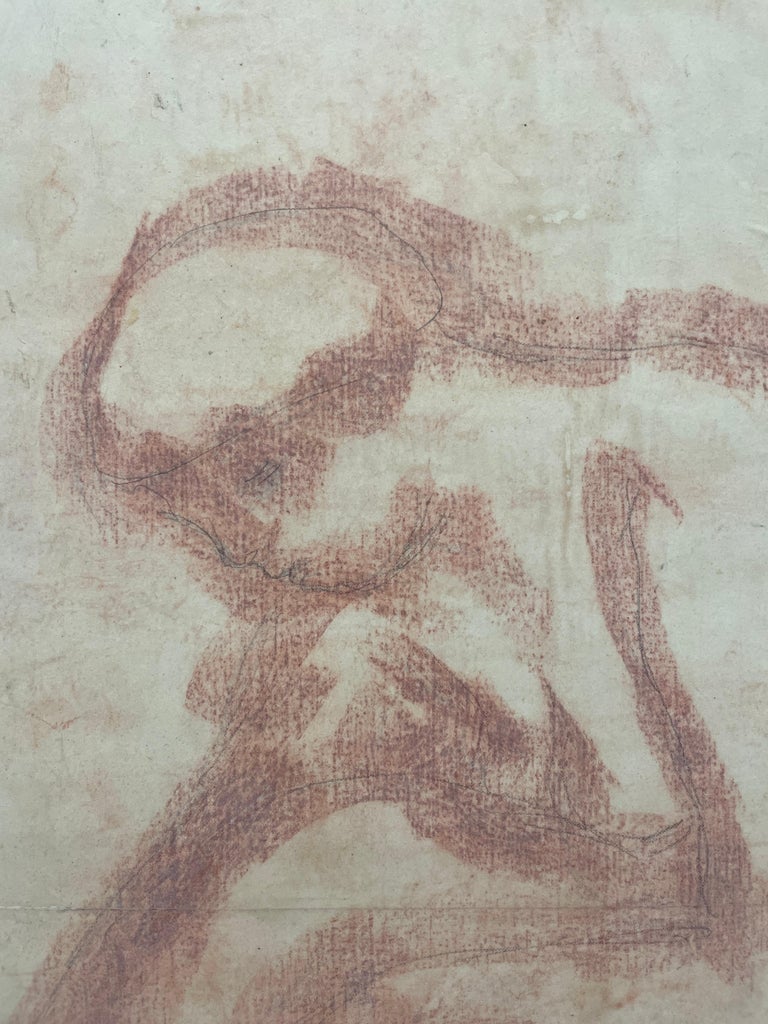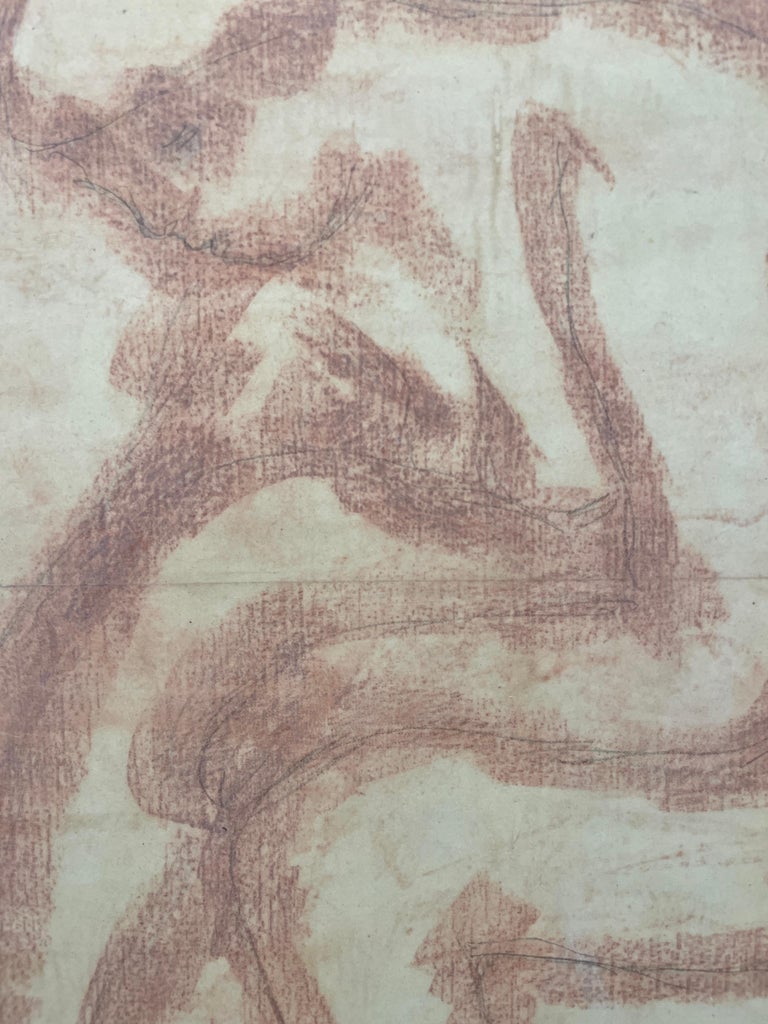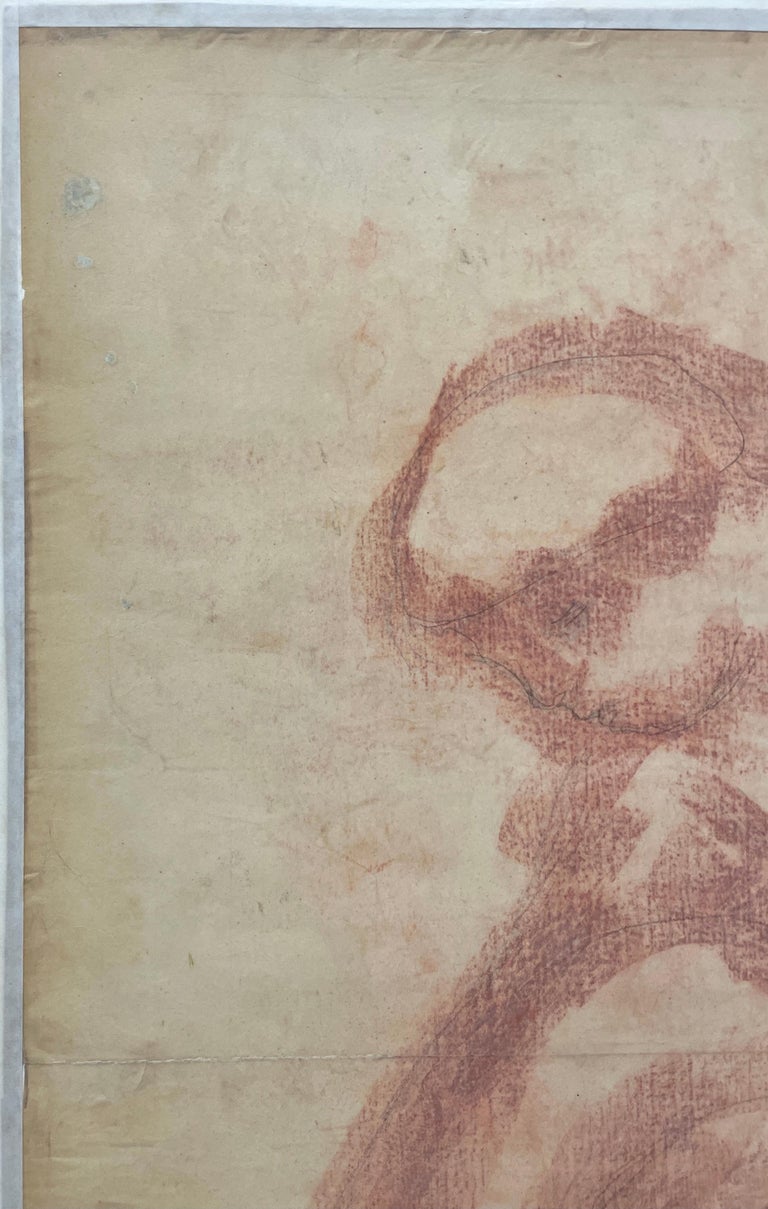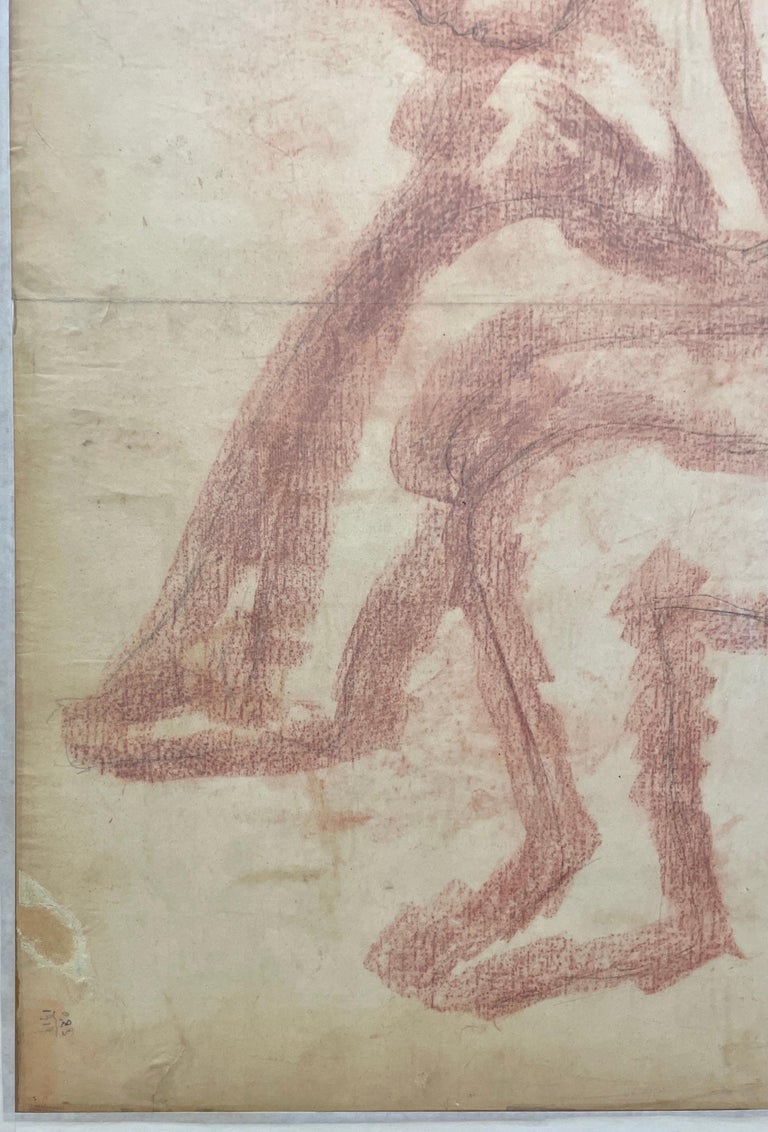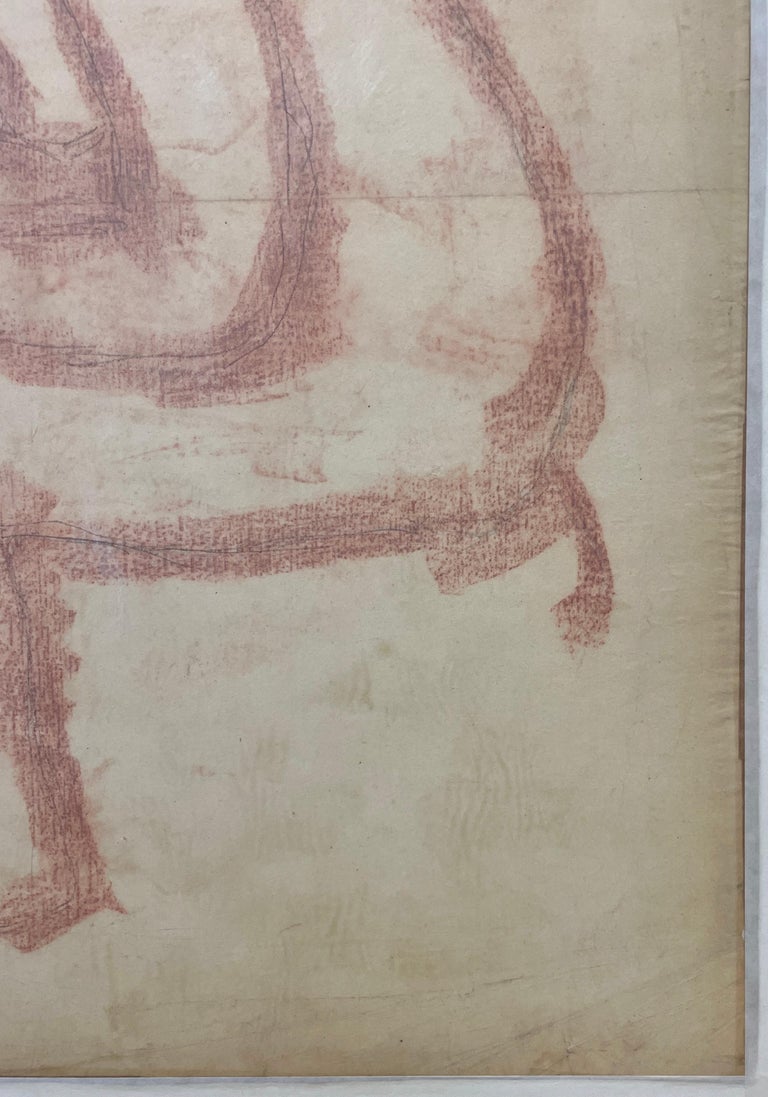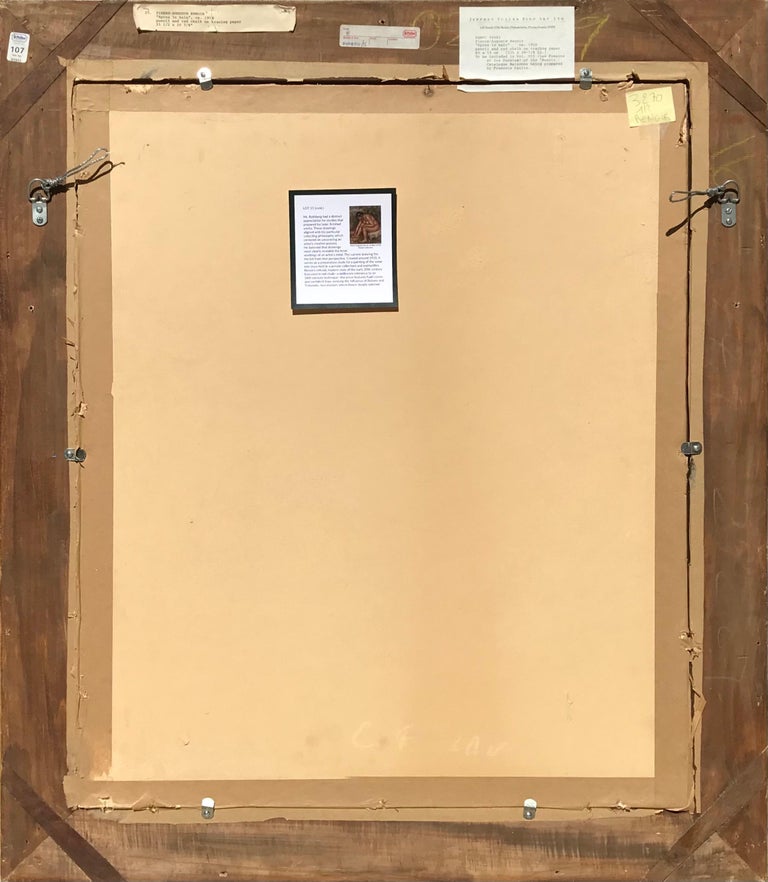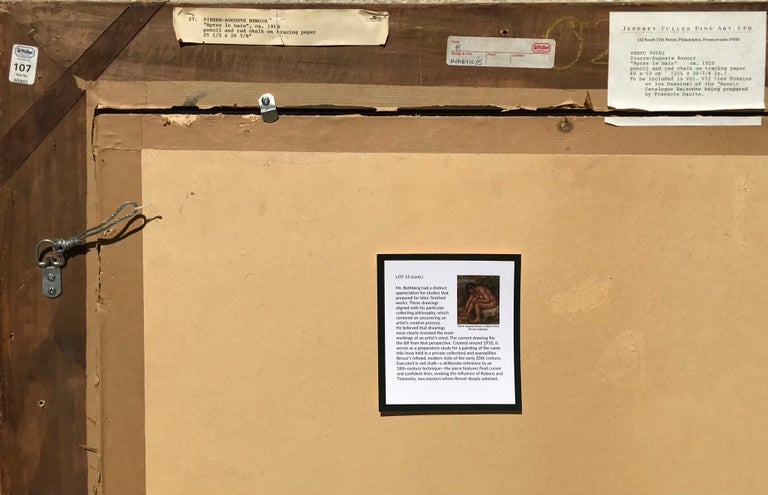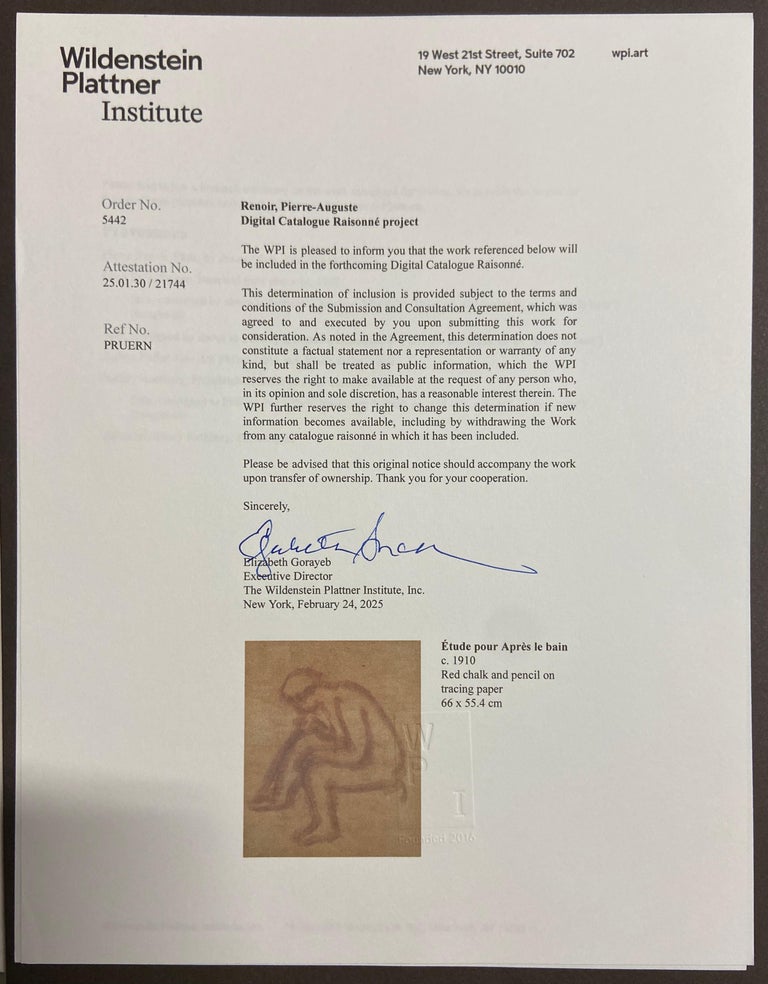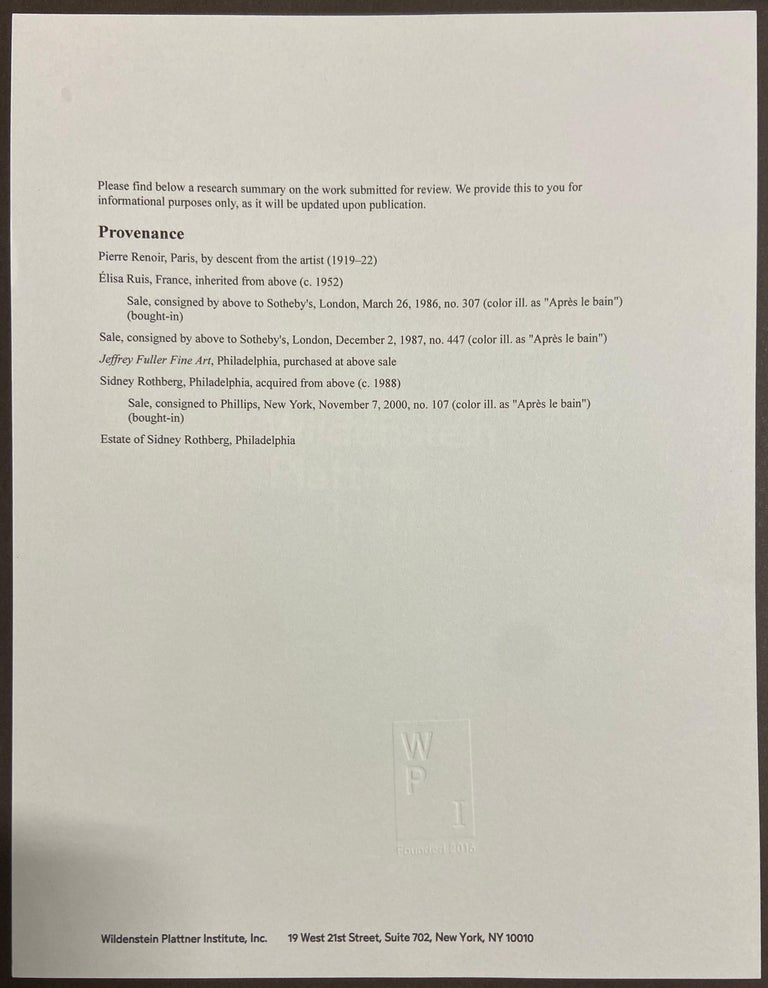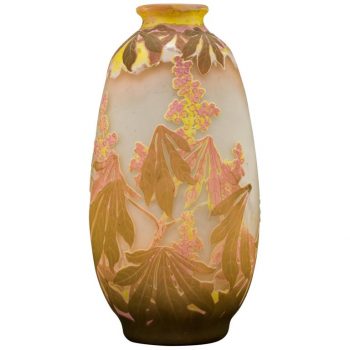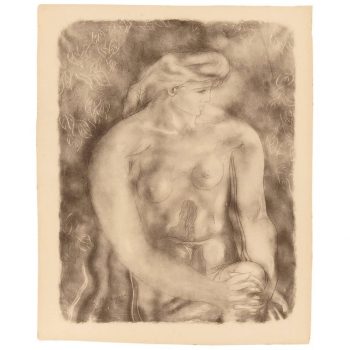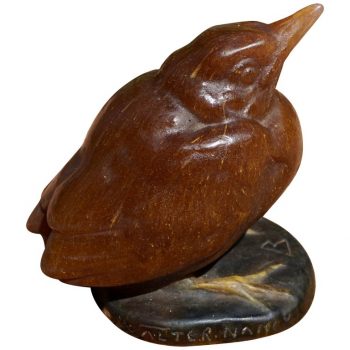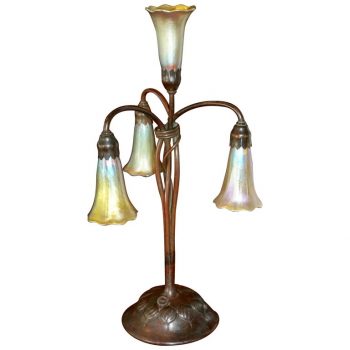Description
Pierre-Auguste Renoir’s Apres Le Bain is a stunning 22 x 26-inch pencil and Sanguine chalk painting depicting a nude woman after her bath. This large, exquisitely detailed work showcases Renoir’s mastery of form and delicate use of forthought. Extremely rare and significant, it holds immense importance in the art market, embodying the Impressionist’s sensual and intimate style.
Pierre Auguste Renoir (French, 1841-1919)
Après le Bain, circa 1910
pencil and red sanguine chalk on tracing paper
Sheet: 26.5 x 21.75 Inches. (67.3 x 55.2cm)
Frame: 39 X 33.5 x 3 Inches
From the Collection of Sidney Rothberg, Philadelphia, Pennsylvania with an impeccable provenance.
Literature
The present work will be included in the forthcoming catalogue critique of Pierre-Auguste Renoir being prepared by the Wildenstein Institute established from the archives of François Daulte, Durand-Ruel, Venturi, Vollard and Wildenstein. It will be accompanied by a Letter of Inclusion from the Wildenstein Plattner Institute, Inc.
Provenance
The Artist.
To his son, Pierre Renoir.
To Madame Pierre Renoir, Paris (widow of the artist’s son).
Sotheby’s, London, sale of December 2, 1987, lot 447.
Acquired directly from the above sale.
Jeffrey Fuller Fine Art, Philadelphia.
Acquired directly from the above sale.
Mr. Rothberg had a distinct appreciation for studies that prepared for later, finished works. These drawings aligned with his particular collecting philosophy, which centered on uncovering an artist’s creative process. He believed that drawings most clearly revealed the inner workings of an artist’s mind.
The current drawing fits seamlessly within this collecting vision. Created around 1910, it serves as a preparatory study for a painting of the same title (now held in a private collection) and exemplifies Renoir’s refined, modern style of the early 20th century. Executed in red chalk—a deliberate reference to an 18th-century technique—the piece features fluid curves and confident lines, evoking the influence of Rubens and Tintoretto, two masters whom Renoir deeply admired..
Condition Report
In overall Very Good condition. The tracing paper is toned, and entirely laid down to the support board via white paper tape along all four edges (underneath which we notice remnants of old brown tape). Lightly faded, with remnants of red chalk around the figure up top (likely due to some rubbing). Discolored outer edges (mostly covered when the work is framed). With minor folds along the outer edges, lightly brittled, due to the mounting. Restorations to edges, tears and notable on lower left and upper left corners (1/2 and 1.5 square inches) fine undulations on some edges visible on photos out of frame. Presents beautifully. Frame in good condition and fitting of work but can be changed to buyers tatste.
Pierre-Auguste Renoir (born February 25, 1841, Limoges, France—died December 3, 1919, Cagnes) was a French painter originally associated with the Impressionist movement. His early works were typically Impressionist snapshots of real life, full of sparkling color and light. By the mid-1880s, however, he had broken with the movement to apply a more disciplined, formal technique to portraits and figure paintings, particularly of women.
Renoir was born into a family of artisans. His father, a tailor who had seven children, moved with his family to Paris about 1845. Renoir demonstrated his gift at an early age. Quickly recognizing his talent, his parents apprenticed him, at age 13, to work in a porcelain factory, where he learned to decorate plates with bouquets of flowers. Shortly after that, he was painting fans and then cloth panels representing religious themes for missionaries to hang in their churches. His skill and the great pleasure he took in his work soon convinced him he should study painting in earnest. Having saved a little money, he decided, in 1862, to take evening courses in drawing and anatomy at the École des Beaux-Arts as well as painting lessons at the studio of Charles Gleyre, a Swiss painter who had been a student of the 19th-century Neoclassical painter Jean-Auguste-Dominque Ingres. Although the academic style of his teacher did not suit Renoir, he nevertheless accepted its discipline in order to acquire the elementary skills needed to become a painter.
The sitter is almost certainly Gabrielle Renard, the nanny to Renoir’s children and a frequent model for the artist. Gabrielle was the cousin of Renoir’s wife, Aline, and came to Montmartre to work for the family at the age of 16. She developed a strong bond with the family and became a favorite subject for Renoir, appearing in several of his most important works, including his 1911 Gabrielle with a Rose (Musée d’Orsay). When Renoir began to suffer from severe rheumatoid arthritis that would eventually leave him unable to walk and scarcely able to grasp a paintbrush, it was Gabrielle that would assist the artist by positioning the paintbrush between his crippled fingers.
Born in Limoges, France in 1841, Renoir began his career as an apprentice to a painter of porcelain wares. He later moved to Paris at the age of 21, enrolling at the prestigious École des Beaux-Arts. It was here, while studying under Charles Gleyre, that Renoir attained a tremendous appreciation for the academic style of painting, a quality that would last throughout his career. This was also when he met Claude Monet and several other classmates, with whom he would later form the Impressionists.
Working closely with Monet, Renoir began experimenting with the portrayal of light and its effect on his canvases. The youngest member of the Impressionist movement, an astute Renoir recognized how a subject was constantly changing due to the dynamic effects of light on color. Relying heavily upon his academic training that focused on composition, lines and descriptive details, Renoir distinguished himself among his contemporaries. His intuitive use of color and expansive brushstroke, along with acute attention to his subject, have placed him among the finest painters in history.
This work is accompanied by a certificate of authenticity and will be included in the forthcoming catalogue raisonné of the work of Pierre-Auguste Renoir from the Wildenstein Plattner Institute.
AVANTIQUES is dedicated to providing an exclusive curated collection of Fine Arts, Paintings, Bronzes, Asian treasures, Art Glass and Antiques. Our inventory represents time-tested investment quality items with everlasting decorative beauty. We look forward to your business and appreciate any reasonable offers. All of our curated items are vetted and guaranteed authentic and as described. Avantiques only deals in original antiques and never reproductions. We stand behind our treasures with a full money back return policy if the items are not as described.


